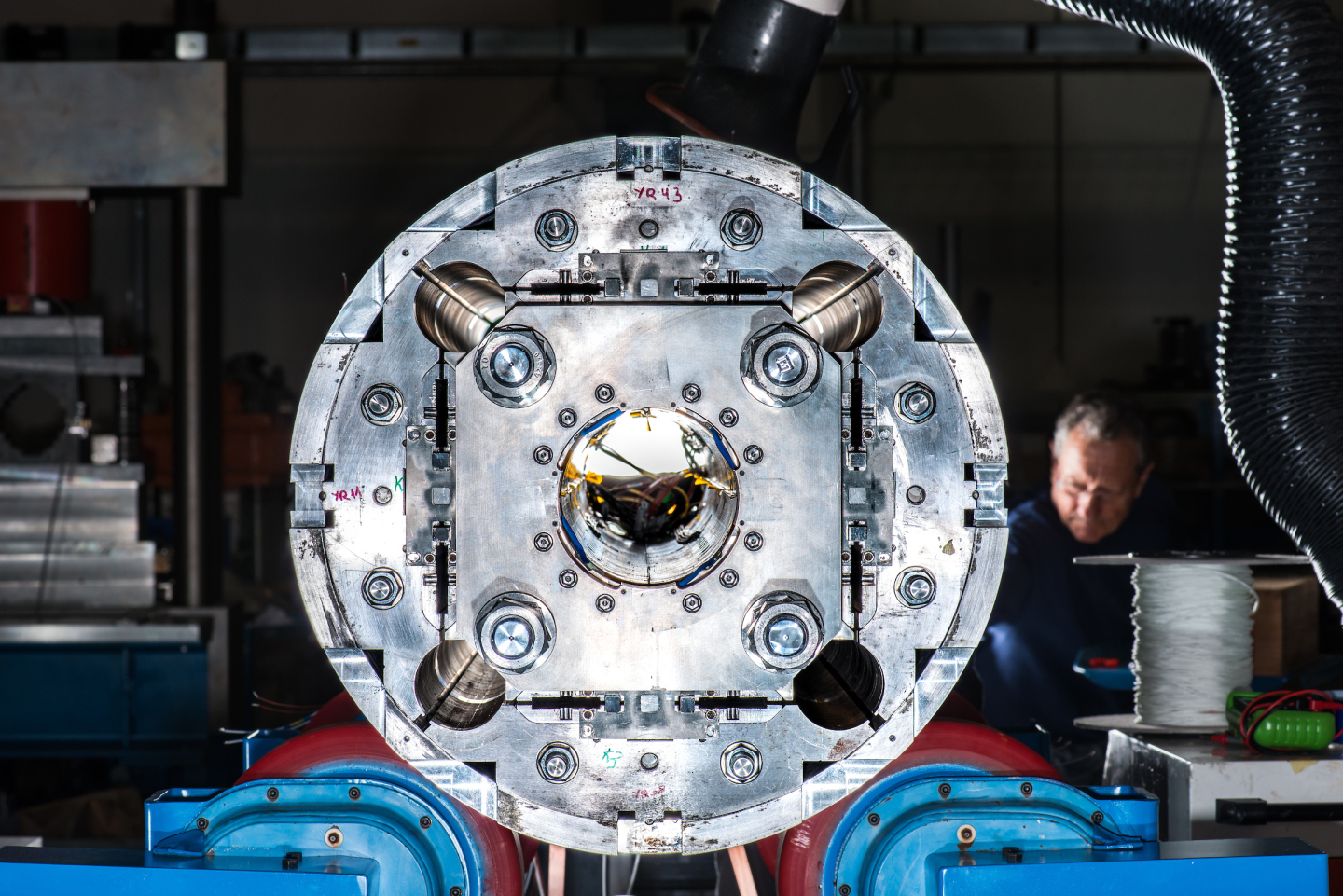While the Large Hadron Collider (LHC) is at the start of a new season of data taking, scientists and engineers around the world are already looking ahead, and working hard to develop its upgrade, the High-Luminosity LHC. This upgrade is planned to start operation in 2026, when it will increase the number of collisions by a factor of five to ten. Physicists will be able to take full advantage of this increased number of collisions to study the phenomena discovered at the LHC in greater detail.
This major upgrade to the machine requires installation of new equipment in 1.2 kilometres of the 27km-long-accelerator. Among the key components that will be installed are a set of new magnets: around 100 magnets of 11 new types are being developed.
More powerful superconducting quadrupole magnets will be installed at each side of the ATLAS and CMS detectors. Their purpose is to squeeze the particles closer, increasing the probability of collisions at the centre of the two experiments. These focusing magnets will exploit an innovative superconducting technology, based on the niobium-tin compound, which makes the quadrupoles’ magnetic field far greater, 50% higher than current LHC superconducting magnets based on niobium-titanium.
The magnets are now in the prototype phase – shorter models, on which tests are run to assess the stability of the design and the mechanical structure. Last year, two 1.5 metre-long short model quadrupoles were tested at CERN and at Fermilab, in the US. A third short model will soon be tested at CERN.
In January 2017, a full-length 4.5 metre-long coil – a world record-breaking length, for that kind of magnet – has been tested at the US Brookhaven National Laboratory and reached the nominal field value of 13.4 T. Meanwhile at CERN, winding the 7.15-metre-long coils for the final magnets has already begun.
The new magnets are being developed through a collaboration between CERN and the LHC-AUP (LHC Accelerator Upgrade Project) consortium, which involves three US laboratories.
This article is an excerpt from a feature article published here.
Watch the video!

